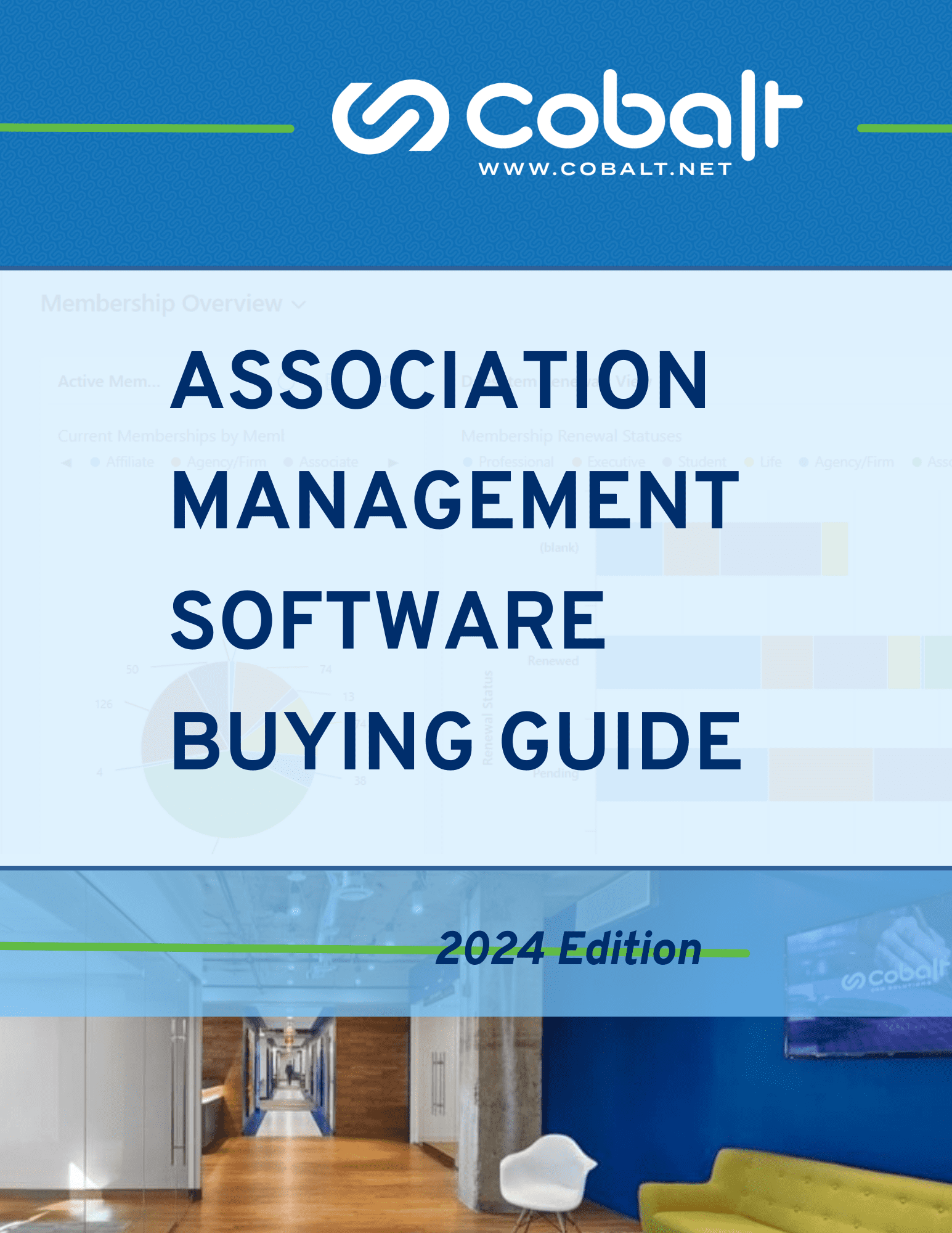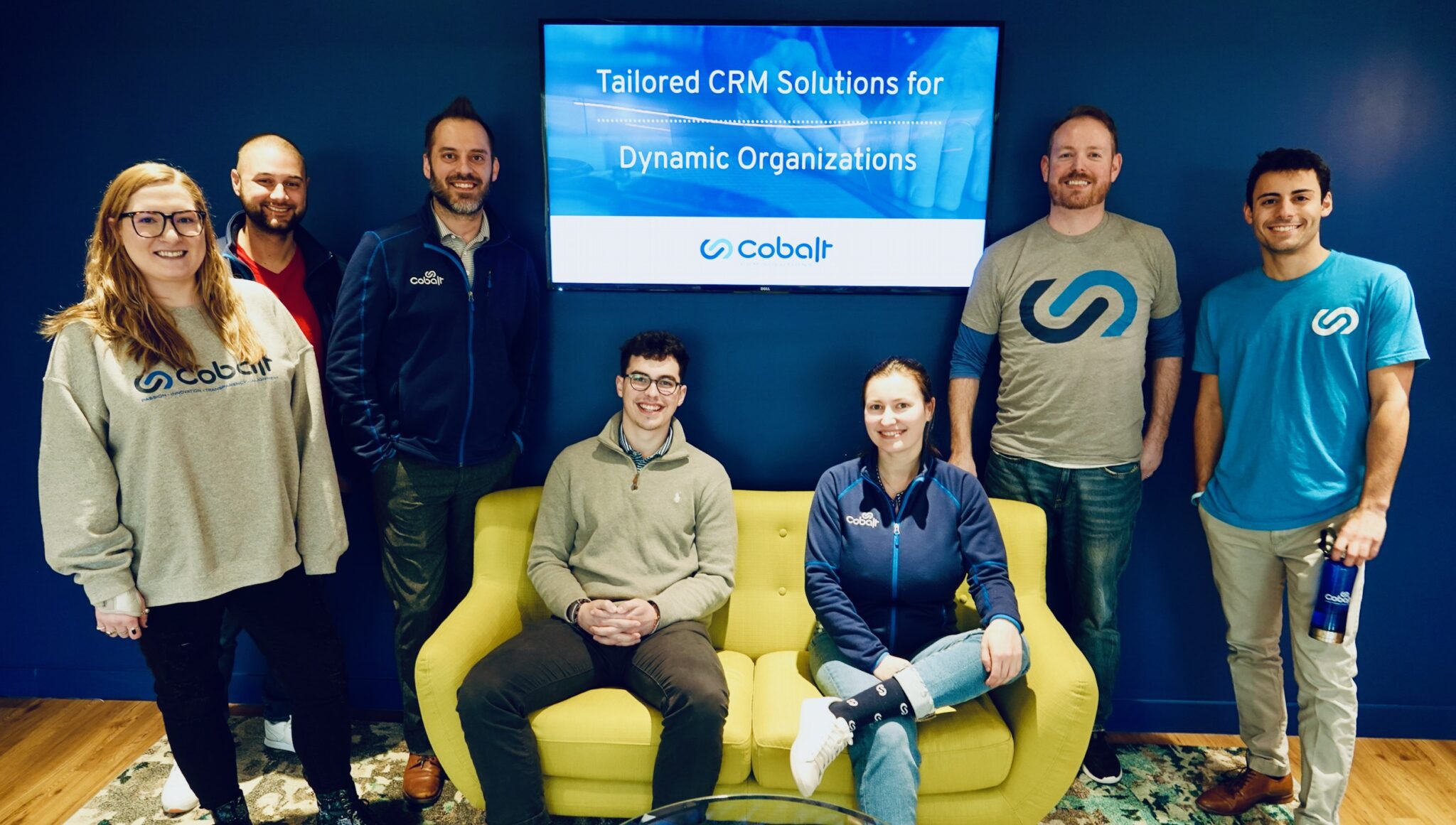Why the cloud based CRM leap is tough
Moving to a cloud based CRM or AMS from an on-prem CRM solution is such a complex decision.
Most teams wrestle through big questions in three areas.
Our team has walked through the issues and the CRM implementation process with hundreds of associations, certification organizations, and SMBs. Let’s quickly look at the big questions and get down to six of the biggest deciding factors to focus on with your team.
If you want to connect with a CRM expert about your specific cloud based CRM questions or project, let’s talk soon!
What does a cloud based CRM cost?
Since your organization knows how vital this technology is for all your major processes and day-to-day operations, you probably don’t need to justify the expense. But it really is an expense. The financial cost and bottom line is significant when typical implementation costs can start around $150,000 for mid-sized associations and monthly SaaS fees average $75 – $150 per user. I’ve updated my post on the average AMS cost factors if you want to see the range and significant cost factors in today’s CRM and AMS projects.
The lesser of two pains
Migrating to a cloud based CRM or AMS often feels painful for teams that have learned to live with a system they don’t like. All those workarounds and familiar processes can make the prospect of change too much to bear.
Knowing you need a new system isn’t the real problem for a lot of organizations, though. In the association organization world today, 30 – 40 percent of organizations will stick with their current vendor even when they are really unhappy.
Losing functionality you have today is often the top concern for associations. It’s not that new systems aren’t flexible or robust enough to include those old capabilities. Getting every employee to systematically think through their workflow and document what they need or how they use the AMS or CRM isn’t easy or quick. And since it’s ripe with opportunities for someone to overlook something critical, teams can get cold feet about moving away from their old on-prem CRM.
On top of that, your staff are only half of the equation when it comes to fear of change. The members your organization serves could be allergic simply to a new look, let alone a new process for paying for an event. Their attitudes have to weigh heavily in each decision you make behind the technological curtain, and that change management burden can feel awfully heavy.
The real ROI for cloud based CRM solutions
The hidden, often unspoken problem is how difficult it is to map out the exact benefits to your end users. There’s no question that your staff will be more efficient or productive. But how much more? Adopting a new CRM will definitely make a difference to your members and their experience with your organization. Is it really possible to quantify that difference so we can measure ROI?
Your team’s bandwidth has to be part of the ROI equation as well. At Cobalt, we advise our client partners to allocate 20 to 30 percent of our team’s estimated hours as the amount of time their staff will need to set aside for this project. We spend 1,000 – 1,500 hours on a typical implementation. That comes out to somewhere between 200 – 500 hours of your staff’s time and energy. Much of that time will be training for each staff member in your organization, but that is still a significant total investment.
There is no easy, simple way forward, and anyone who promises you otherwise is lying.
Some of the paths forward are less painful, costly, or risky than others, though. That’s what we love to do for people and organizations in your position. Let’s be clear about the problems, the benefits, and help you really understand the options for getting this adoption accomplished.
1. A cloud based CRM is built for your growth
We believe that investing now in a modern, cloud based CRM platform like Microsoft Dynamics 365 is going to have long-term benefits that more than justify the cost. Right now, your staff is probably just getting the bare minimum out of your old CRM, and it’s way too hard just to get that much. This is your opportunity to invest all of that money and resources in a platform that will improve your staff’s productivity, make getting the data they need easier, increase their overall happiness, and legitimately empower them to better serve your members.
2. You’ll look more relevant for your members
Speaking of those members, have you noticed a shift in their expectations in recent years? We sure have. The consumer apps they use are powerful, sophisticated, and have better and better usability. Migrating to a new AMS or CRM platform will make your staff much, much happier, but …
You actually stand to lose members if you keep putting off a new adoption.
Maybe you shouldn’t have to look relevant to be relevant to your members. But the growing reality is you do. Not investing in new technology will only be more painfully obvious as time goes on.
Having a cloud based CRM can improve your member or customer experience simply by looking fresh and modern. Things like strong password requirements and two-step or multi-factor authentication functionality have quietly become more and more the norm for reputable apps, websites, and systems. Your staff and members will both breathe easier knowing you’ve taken proactive steps to ensure strong data security.
Cloud based CRM systems also bring the cutting-edge innovation of AI right into the daily workflows and user experience. Even the biggest holdout on your staff would celebrate the chance to reduce menial, repetitive tasks like email reminders and generating quotes.
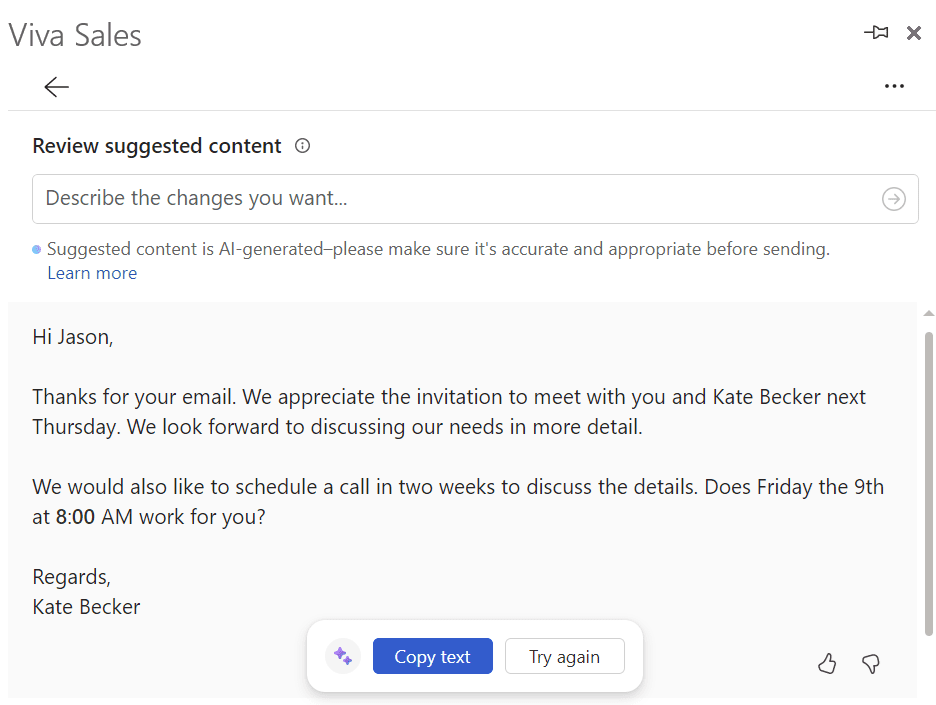
Cloud based CRM systems also bring the cutting-edge innovation of AI right into the daily workflows and user experience. Even the biggest holdout on your staff would celebrate the chance to reduce menial, repetitive tasks like email reminders and generating quotes.
All the efficiencies and increased focus your staff benefit from turns into a tangible benefit for your members, as well. A more frictionless, more timely, more personalized member or customer engagement gives you a big win in several columns.
3. Major cloud based CRM players have matured into stable options
Platform stability and reliability continue to deepen with major players like Microsoft making gigantic investments in their existing offering (Microsoft Dynamics 365) and their research and development for technology like Copilot AI. Microsoft Dynamics 365 continues to be an industry-leading and award-winning CRM solution. They have a robust user and support community, superior integration with Office 365, and all the reporting, integration, and low-code/no-code resources packed into The Power Platform.
I’ve already mentioned the increased data security that comes with mature cloud based CRM systems, but there are many layers to that benefit. Things like backups, bugs, and nebulous, messy “incidents” are even bigger hassles to deal with yourself inside an on-prem CRM. The cloud based solutions we’re talking about mean you can trust your CRM or AMS provider to regularly keep the software updated, back up your data, be proactive in addressing security concerns, and generally keep things running smoothly. We’ve seen how all this can really free up an organization’s IT team for more important projects and development work.
4. Boundless integrations with huge value
Flexibility is a benefit that often drives clients forward in the cloud based CRM adoption process. It has taken a while, but the older way of conceptualizing what a CRM is, and what it should do, has changed. It used to be that we felt like they should be Swiss Army Knives — self-contained technology that did everything. Most people see things differently, now, and conceptualize their CRM as a hub designed to handle core functionality that can be easily integrated, customized, or changed as your needs change.
Cloud based CRM and AMS solutions make it easier than ever to leverage seamless integrations with the applications your team already knows so well. Your email clients, productivity tools, marketing automation platforms, ERP system, e-commerce … the list of simplified connections really does go on and on. No more expensive, time-consuming custom integrations from your AMS or CRM vendor for applications that are already commonplace.
Another halfway hidden benefit of integrations with things like Office 365 apps (Outlook, Excel, etc.) is that it gives your team more incentives to work inside your CRM. That translates into less siloed data, a truer picture of your member engagement, faster customer service, and an overall increase in the value and benefit of your CRM or AMS investment.
Our blog about our favorite free, pre-built CRM integrations might help you see more of what’s possible and spiking our team’s productivity at Cobalt. You’ll probably recognize some powerful tools you already love to use in your daily work.
And of course, an integration with Power BI from the Microsoft Power Platform is literally transforming the dashboard and reporting experience for so many associations and businesses. Check out some of the new Power BI dashboards we’ve built for things like engagement, events, membership, and e-commerce.
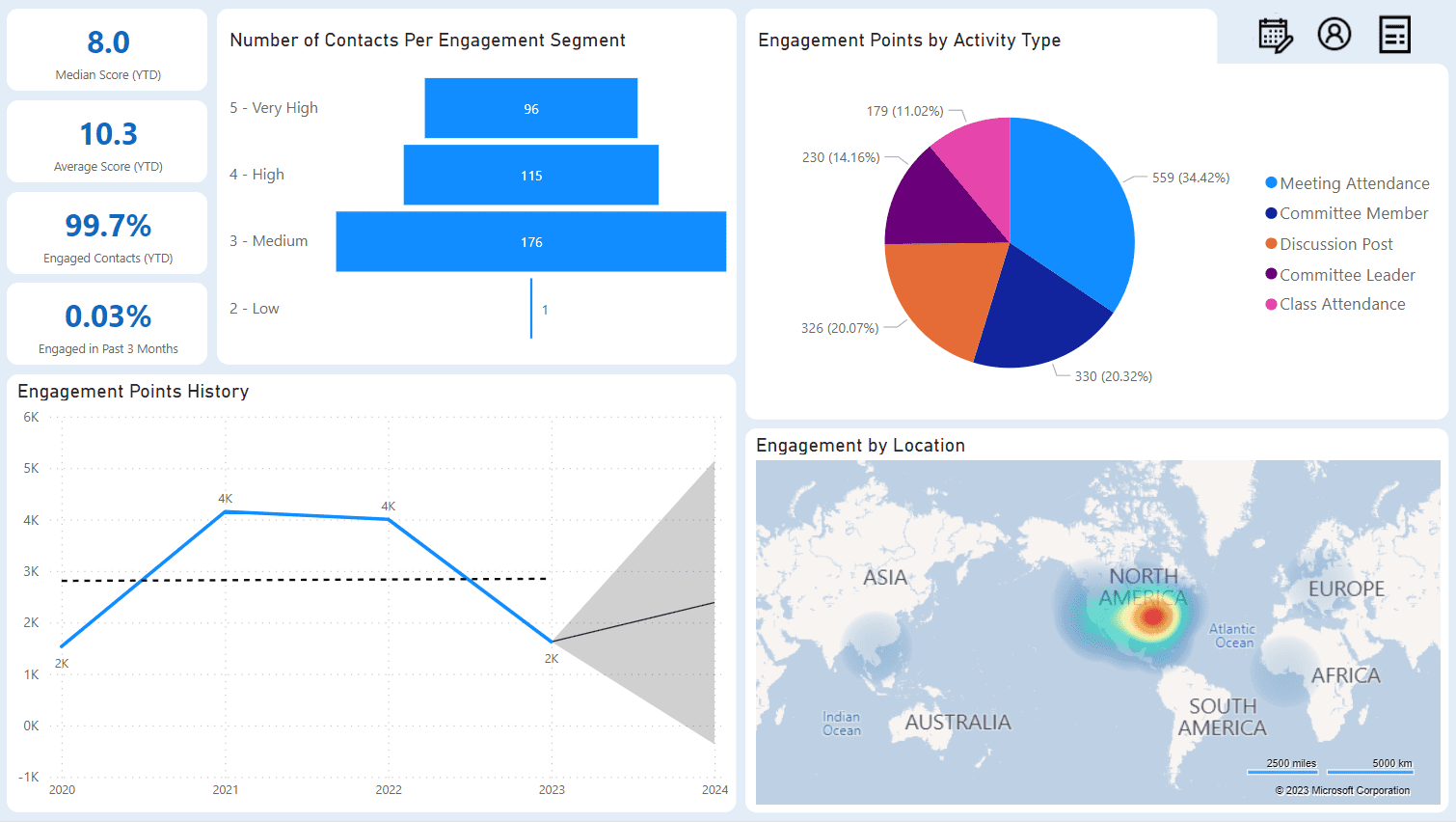
Engagement Dashboard
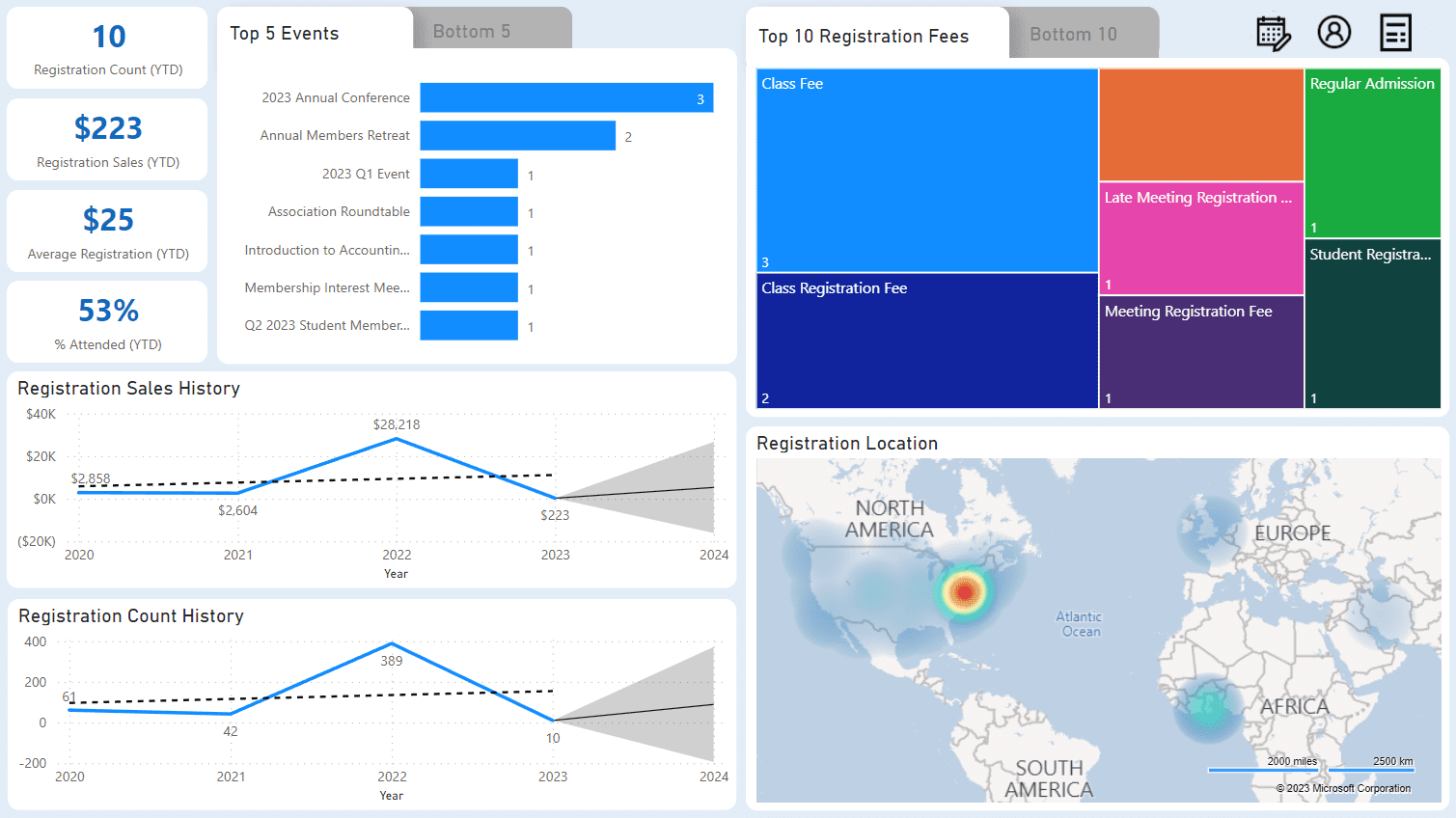
Events Dashboard
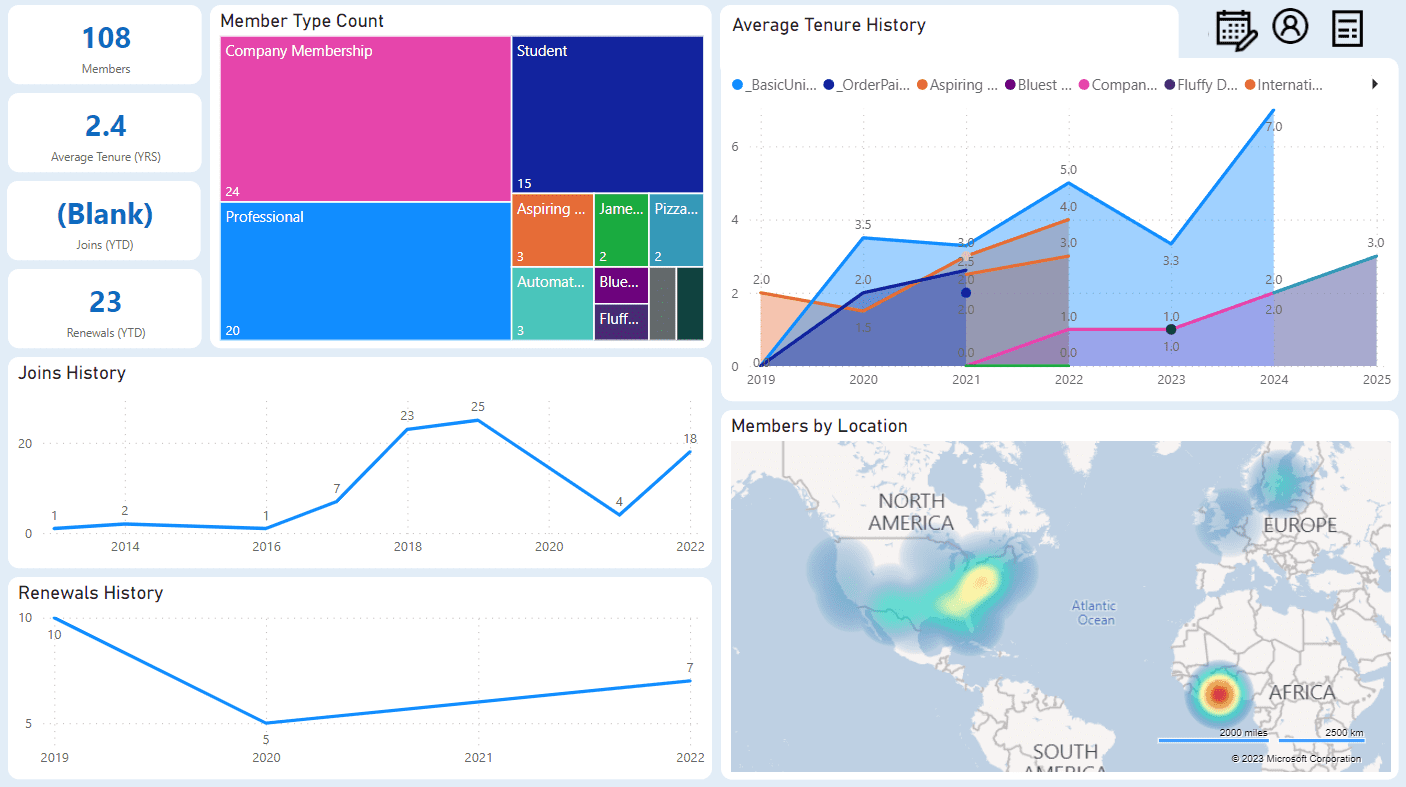
Membership Dashboard
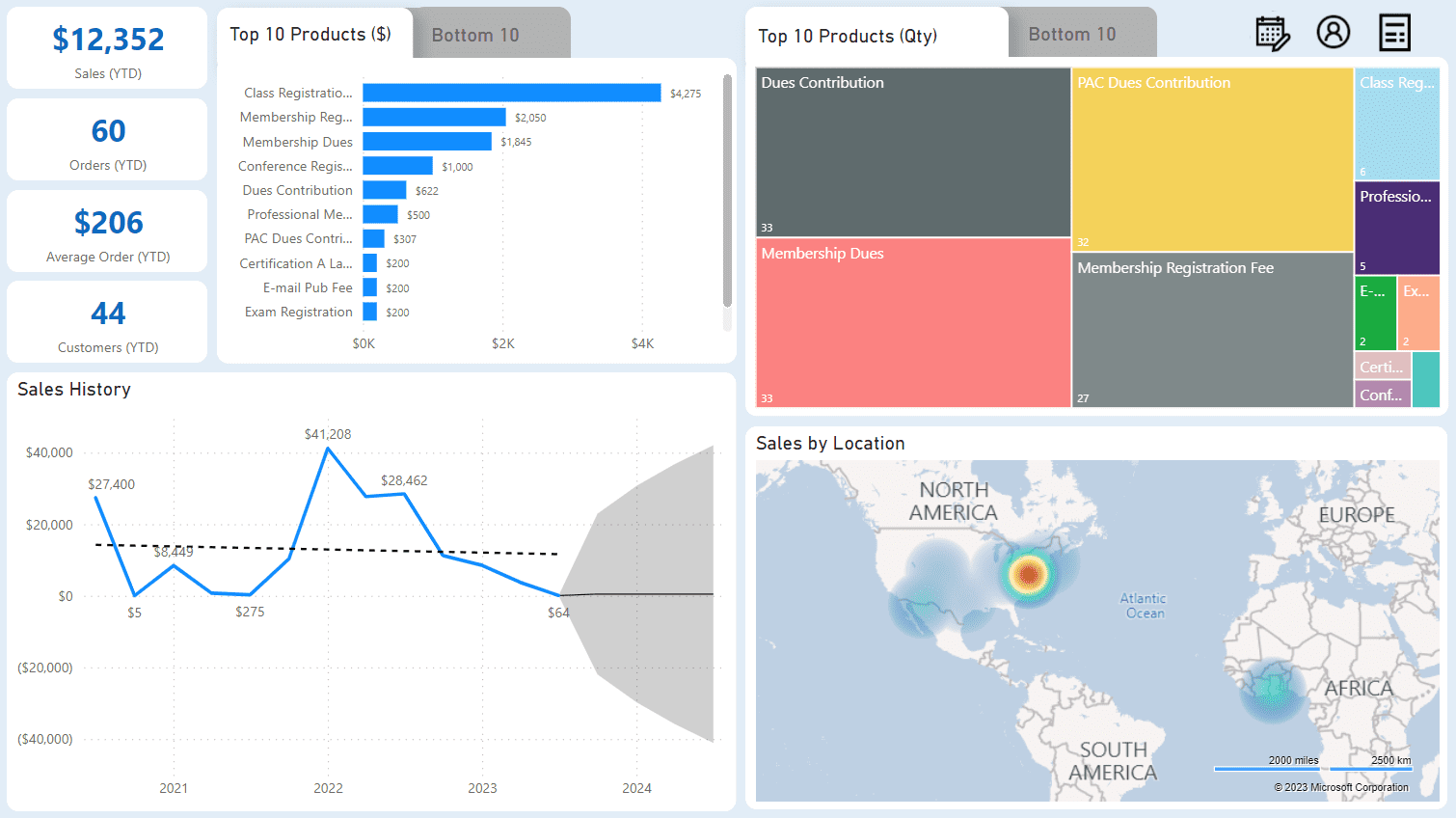
e-Commerce Dashboard
5. Refresh your business processes
How about a fresh start or clean slate for some of those business rules or processes you’ve been meaning to update for years now? Have you been wanting to change how you charge for membership or some other critical piece of functionality for your association’s members? The move to a cloud based CRM or AMS is a prime opportunity to make (and document!) those updates.
It’s hard to see your own blindspots or to reimagine a new, more efficient way of doing something that’s been set in stone for years. This is one area where our team at Cobalt really excels and adds value for associations, certification organizations, and all the partners we serve. It’s a wasted opportunity to simply go through the time and expense of migrating to a cloud based CRM that functions exactly like your current system. There are certainly significant improvements to your processes available. We can help you understand them and prioritize them in the CRM implementation process.
6. Transparency and control
The last issue we want to touch on as you consider moving to a cloud based CRM or AMS is transparency, and the control that comes with it.
If you’re still using an on-prem proprietary CRM, we have a pretty good idea about the limitations your staff is working under, and the kinds of complaints that you’re probably hearing.
A modern, cloud-based solution was a new and uncertain prospect even five years ago. But the technology, support systems, and partner companies like Cobalt have matured, addressed the scariest risks, and developed a scalable CRM model for the foreseeable future.
A cloud based system will absolutely increase your ease of use and accessibility. You’ll also offload the hard work of managing your own infrastructure and troubleshooting CRM issues. But with that comes a cost, literally and figuratively. While you no longer need to worry about handling things like maintenance and scalability alone, this does mean that you lose some of that control.
However, we find that most of the downsides of giving up some of that control don’t really outweigh the benefits and opportunities that come with moving to the cloud. Most business don’t need (or even want) to handle deploying updates or troubleshooting disruptions.
And the looming reality is that you will need to do something eventually. As more and more enterprise software companies move into the cloud, they keep phasing out their on-prem offerings. Soon, it really won’t be a choice, and for most associations, proactively forging ahead now makes a lot of sense.
How Cobalt can help
If you’re with an association or certification organization, take a copy of our AMS Buying Guide with you today. It’s packed with helpful best practices, current AMS options, and questions to ask your team and vendors as you navigate the AMS research and selection process.
If you want a quick overview of our refined AMS software built on top of a leading cloud based CRM (Microsoft Dynamics 365), check out our association software.

